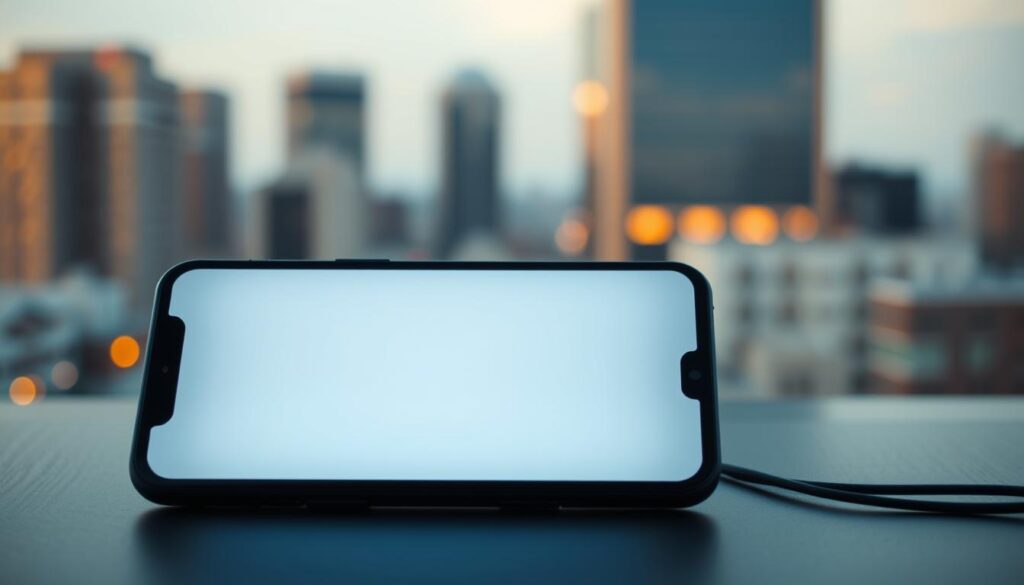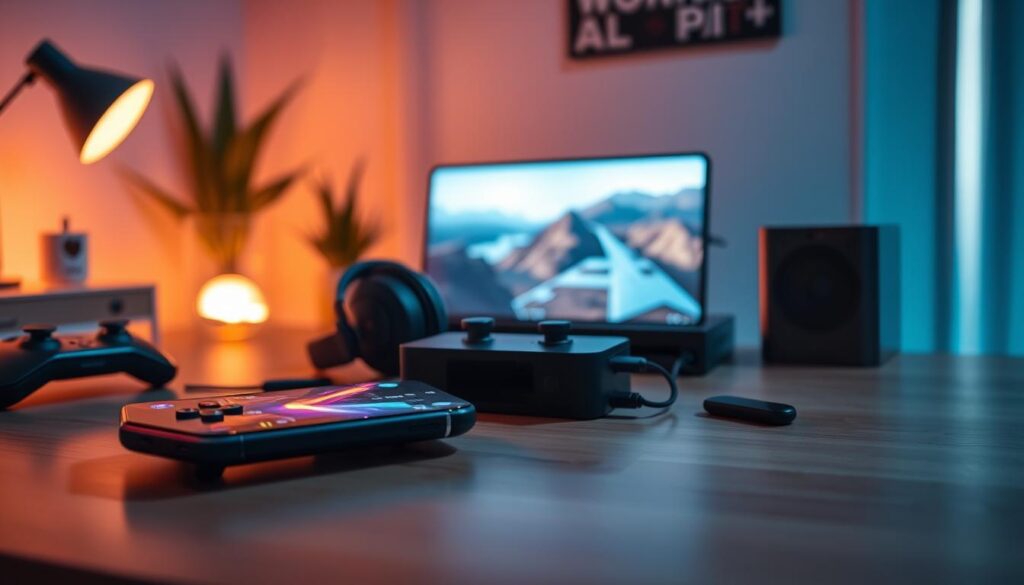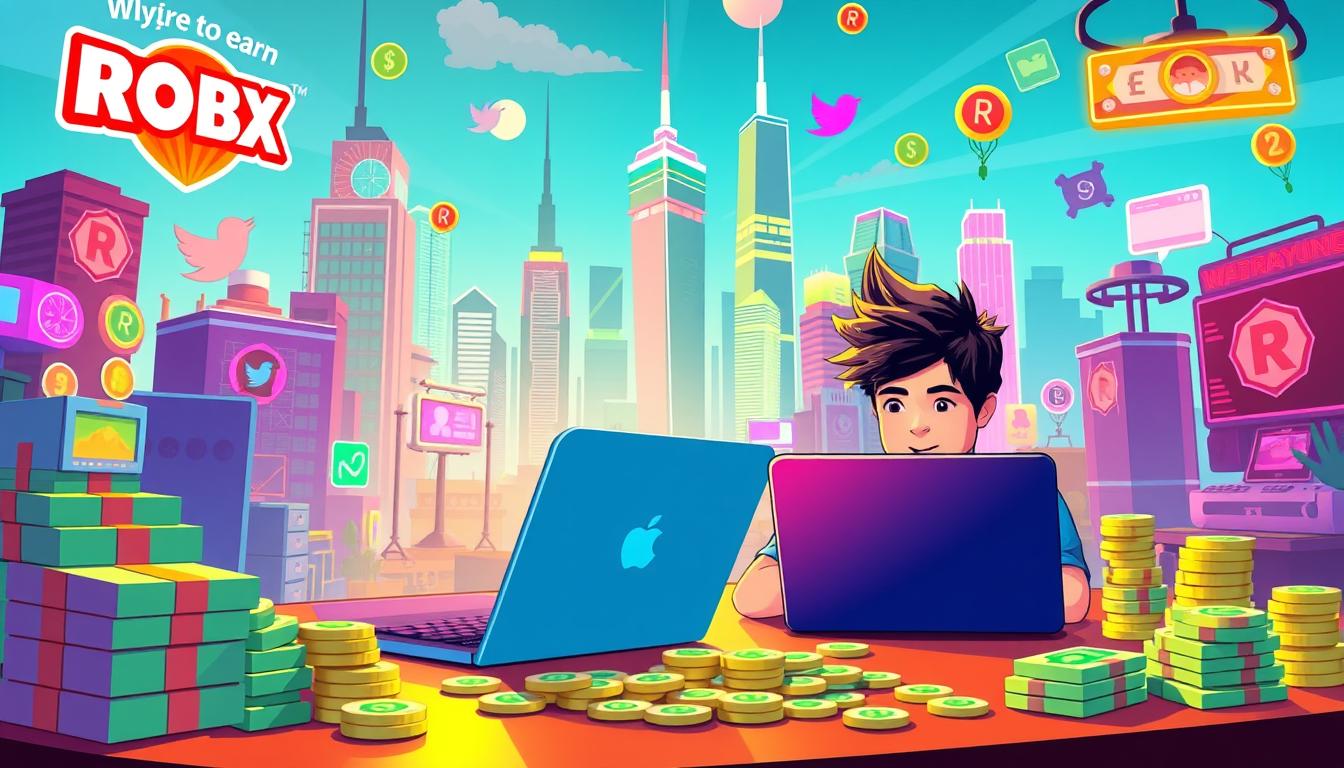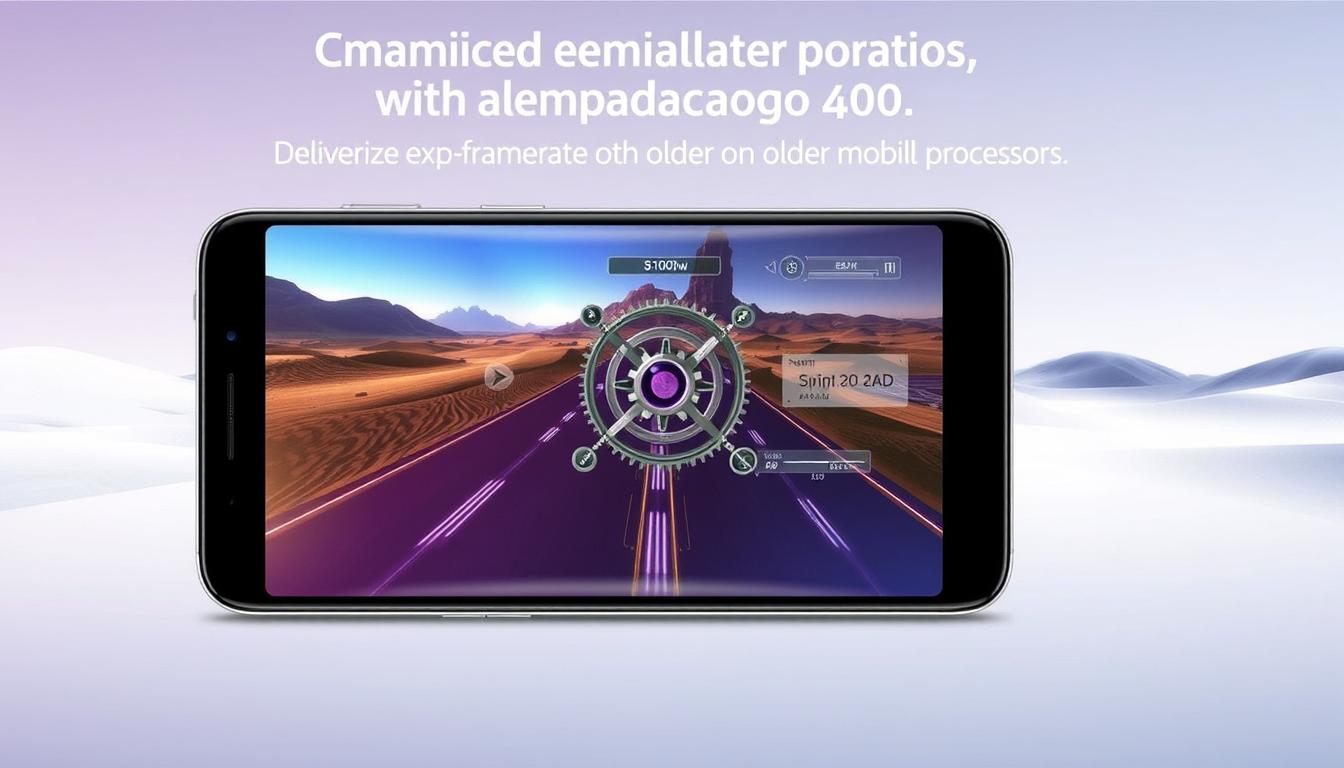Anúncios
Ever wondered how to boost your gaming on a slow device? Lightweight emulators are the key many haven’t found yet. They help phones with little storage run games smoothly, without needing new hardware.
These emulators work well on different devices and make games run better. Even phones with small storage can play modern games easily. Let’s dive into how lightweight emulators can change your mobile gaming.
Understanding Emulators and Their Advantages
Emulators are key tools in gaming and software development. They mimic hardware and software setups. This lets users run apps that might not work on their devices.
Anúncios
They offer more than just app running. Emulators make it easy to develop apps for different platforms without needing many devices.
For gamers, emulators are a big deal. They let people play classic and demanding games on less powerful devices. This means gamers can enjoy a wide range of games, no matter their device’s specs.
This is not just about playing games on phones. It’s also about keeping old games alive as technology changes.
Anúncios
Emulators have become a part of our lives. They offer both new and old gaming experiences. This makes them important for preserving culture and driving innovation in the gaming world.
Emulators have changed how we experience software. They are essential for developers and gamers today.
How Emulators Improve Gaming Performance
Emulators make games run better, especially on devices with less power. They use system resources wisely, letting users play games with lots of graphics smoothly. Without them, older games might not work well on new systems, but emulators fix this problem.
One big emulator benefit is using advanced features like hardware-assisted virtualization. This makes emulators work better, leading to better graphics. Games that used to slow down on weak devices now run smoothly.
Dynamic resource allocation is also key. It lets emulators adjust resources as needed, making games run smoothly. Players get better graphics and controls, making the game more fun.
Together, these features show how emulators boost game performance. They help gamers get the most out of their devices, even if they’re not the latest. Emulators let players enjoy old and new games without losing quality, making them a must-have for gamers today.
Types of Emulators for Different Needs
Emulators are key in bridging technology gaps across different fields. They cater to various needs, from gaming to software testing. The main categories include gaming emulators and development emulators.
Dedicated gaming emulators, like BlueStacks and NoxPlayer, are made for gaming. They create a mobile gaming experience similar to consoles or desktops. This is great for gamers who want to play their favorite games on phones with limited memory.
Development emulators, on the other hand, are vital for software developers. They test apps on different operating systems, ensuring smooth performance. These tools help developers fix bugs and improve app performance before release.
Choosing the right emulator depends on your needs. Do you want to play games or test apps? Knowing the differences helps users pick the best emulator for their needs.
Benefits of Using Lightweight Emulators
Lightweight emulators offer big benefits of lightweight technology. They are perfect for those with low-end devices. These emulators use less resources, making them great for smartphones or PCs that struggle with heavy software.
They work well because they don’t overload the system. This means users can play games and run apps smoothly.
These emulators are great because they work well even on devices with limited specs. They use less CPU and memory, leading to smoother gameplay. Budget gamers can enjoy their favorite games without losing speed or functionality.
They make budget devices run Android apps without lag. This makes gaming more fun. For better gaming, knowing the benefits of lightweight technology is key.

In summary, lightweight emulators are a strong choice for gamers with limited devices. They offer optimal performance and resource efficiency. They’re perfect for anyone wanting to boost their gaming without spending a lot.
Comprehensive Requirements for Emulators
Knowing what you need for emulators is key for a great gaming experience. You should look at system specs for a smooth game run. A dual-core processor is a must for most emulators, and 4-8 GB of RAM helps avoid lag.
Don’t forget about disk space. You’ll need about 16 GB for setup and play. The display resolution matters too, aiming for at least 1280×800 for clear graphics.
It’s also important to match the emulator with your operating system. Whether you’re on Windows, macOS, or Linux, make sure it works well. Meeting these hardware needs lets you enjoy games without any hassle.
| Component | Minimum Requirement |
|---|---|
| Processor | Dual-core |
| RAM | 4-8 GB |
| Disk Space | 16 GB |
| Display Resolution | 1280×800 |
| Operating System | Windows / macOS / Linux |
Performance Boost: Emulators for Better Gaming Performance on Phones with Limited Storage
For those with smartphones that have little storage, picking the right emulator can make a big difference. It’s important to look at how well an emulator works. This includes checking the frame rate, input lag, and how fast it processes information.
These factors help us understand how good an emulator is. They tell us how smooth the game will run and how fast it will respond to our actions.
Defining Performance Metrics
When we talk about how well an emulator performs, we’re looking at a few key things. These are:
- Frame rate consistency: This is how smooth the game looks and feels.
- Input lag: This is how quickly the game reacts to what we do.
- Processing speed: This shows how fast the emulator can handle the game’s data.
Compatibility with Multiple Games
Emulators that work well with lots of games are great. They let us play a wide range of games, from old favorites to new ones. This means we can enjoy more games without needing a super-powerful phone.
Good emulators make sure games run smoothly, even on phones with less power. This makes playing games on low storage devices a lot better.
Emulator technology keeps getting better, making games run smoother on older phones. Modern emulators have features that help games run well, even on phones that aren’t the latest models. This means we can keep playing our favorite games without losing quality.
| Performance Metric | Importance | Impact on Gaming Experience |
|---|---|---|
| Frame Rate Consistency | High | Smoother gameplay, less lag |
| Input Lag | Medium | Improved responsiveness |
| Processing Speed | High | Fluid game mechanics |
Top Lightweight Emulators for Low Internal Memory Phones
Choosing the right emulator is key for gaming on devices with little storage. People look for emulators that work well and don’t use too much memory. Here are three top emulators for low memory that are highly recommended.
BlueStacks
BlueStacks is known as the world’s #1 App Player. It’s made for smooth gaming, with features like multi-instance support and customizable controls. It’s a top choice for those with low memory devices.
NoxPlayer
NoxPlayer is loved for its easy-to-use interface and strong performance. It supports many gaming needs and lets users adjust controls to their liking. It’s great for casual gamers with low memory devices.
LDPlayer
LDPlayer is all about gaming, with a lightweight design and great performance. It’s especially good with games like Free Fire and Minecraft, even on devices with little memory. It shows how a good emulator can improve gaming without using too much memory.
How to Choose the Right Emulator for Your Device
Choosing the right emulator is all about knowing what matters. First, check your phone’s specs. Look at the processor speed, RAM, and storage. These will tell you which emulators will work best.
Then, see if the emulator works with the games or apps you want. Different emulators support different things. Make sure your emulator matches your gaming needs for a great experience.
Lastly, think about how each emulator performs. Some might use resources better, while others might show better graphics. Pick an emulator that fits your device and your gaming goals for the best experience.
Configuring Your Emulator for Optimal Performance
Setting up your emulator right is key to better gaming on devices with less power. You need to give enough RAM and CPU cores to the emulator. Also, make sure hardware virtualization is turned on for better performance.
Keeping your graphics drivers up to date is also crucial. Old drivers can slow down your games, causing lag and low frame rates. Updates help the emulator use new tech, making games look and run better.
Watching how your system uses resources while adjusting settings is important. This lets you find the perfect balance for your device. Small tweaks can make a big difference in how well games run on low-end phones.
Tips for Enhancing Gaming Experience on Low-End Phones
For gamers with low-end phones, making the most of your gaming experience is key. Start by closing background applications to free up memory. This lets games run smoother. Using lightweight game versions can also boost performance, cutting down on load times and improving graphics.
Adjusting graphics settings in games is another smart move. Try lowering the resolution and turning off fancy graphics to enjoy games more without using up too much power. Keeping your emulator software up to date is also crucial. Updates often improve how well the emulator works, making games run better.
Looking for more tips for low-end devices? Try using emulators made for better performance. These emulators use less power, letting you enjoy games fully even on devices with limited specs.

Community and Developer Support for Emulators
Joining the developer community for emulators offers a wealth of user resources. These can greatly improve your experience. Forums are a great place to find help, with tips and strategies from experienced users.
These platforms allow users to share their problems and learn from others. It’s a great way to get help and grow your knowledge.
But there’s more than just forums. Developers also provide instructional videos and detailed documentation. These guides help users set up and use emulators, even if they’re new to it.
Using these tools makes your experience better and connects you with others. It’s a way to feel part of a community that supports and helps each other.
Conclusion
Lightweight emulators are key tools for better gaming on devices with little memory. They let users explore a wide range of games without losing the fun. These emulators are made to use your device’s full potential, making gaming smooth.
Knowing how to use these emulators is important for better gaming. By setting them up right, you can enjoy games more, even on devices that seem limited. This not only makes games run better but also makes playing more fun.
In the end, lightweight emulators are a big help for gamers. By choosing and setting up the right ones, you can keep your gaming fun and exciting. This shows that even with less storage, you can still enjoy great games.
FAQ
What is an emulator?
An emulator is software that makes a virtual space on devices. It’s used for gaming, testing apps, or developing software.
How do emulators enhance gaming performance?
Emulators make the most of your device’s hardware. They reduce system stress and ensure older games work well on new systems.
What types of emulators are available?
There are many emulators out there. Some are for gaming, like BlueStacks and NoxPlayer. Others help with app testing and making apps work on different platforms.
What are lightweight emulators?
Lightweight emulators are for devices with limited power. They let you run Android apps smoothly without slowing down your device too much.
What are the system requirements for running emulators effectively?
For the best performance, you’ll need a dual-core processor and 4-8GB of RAM. Also, about 16GB of disk space and a display resolution of 1280×800 are necessary. Plus, it must work with your operating system.
How can I improve the performance of my emulator?
To boost your emulator’s performance, give it enough RAM and CPU power. Turn on hardware virtualization, update your graphics drivers, and tweak settings for better performance.
What tips can enhance gaming experiences on low-end phones?
To get better gaming on low-end phones, close apps you’re not using. Use lighter game versions and adjust settings for better performance. Also, keep your emulator up to date.
What community resources are available for emulator support?
For help with your emulator, join communities, forums, and watch tutorials. You’ll find tips and solutions for any issues you face.
How do I choose the right emulator for my device?
When picking an emulator, check if it fits your device’s specs. Look at system performance, supported apps, and how well the emulator uses your device’s resources.
What are the advanced features in modern emulators?
Modern emulators have cool features like hardware-assisted virtualization. They also dynamically allocate resources for better graphics and smoother gameplay, especially for demanding games.




